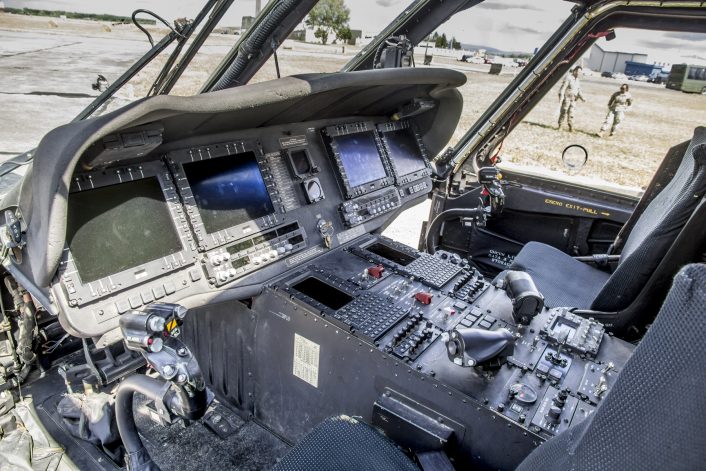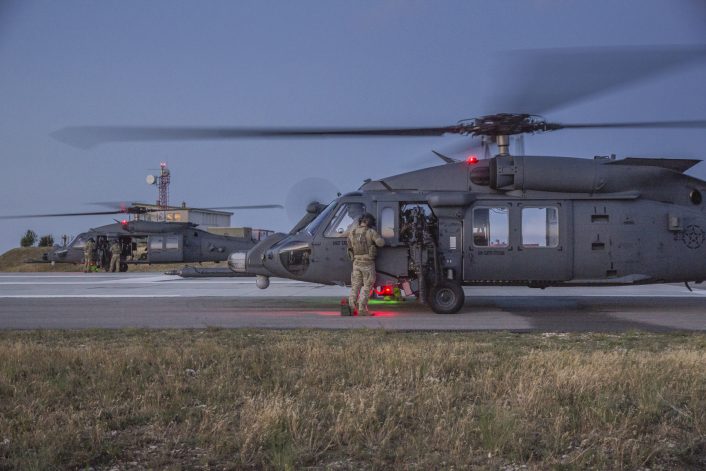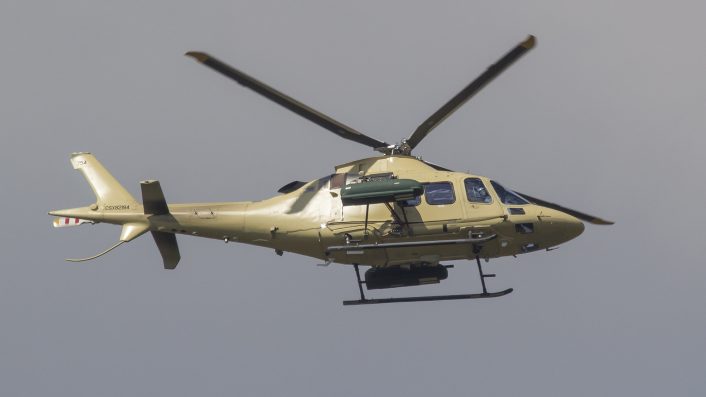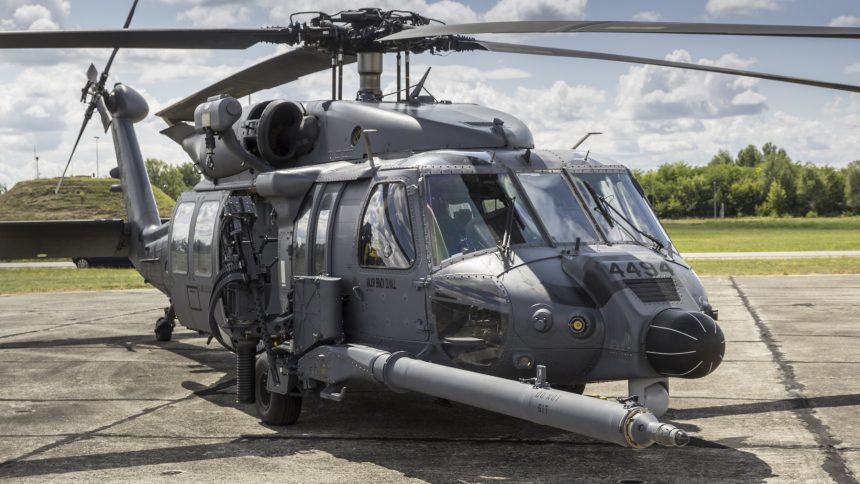First iteration of the Jolly Vihar exercise series featuring the HH-60W Jolly Green II helicopter for the 56th Rescue Squadron.
The U.S. Air Force rescue community has settled into a useful rhythm in western Hungary. What began as a first visit in 2022 has become an annual stop for the 56th Rescue Squadron that now flies the HH-60W Jolly Green II. The 56th RS received its first new HH-60W Jolly Green II helicopter, which arrived onboard a C-5 Galaxy, on Dec. 13, 2024. Aviano started retiring its final five legacy HH-60G Pave Hawks in 2024, with the first, tail number A6114, sent to the boneyard on board a C-17 Globemaster III. But the base in northeastern Italy, home to the 31st Fighter Wing, had started retiring older HH-60Gs in 2020 and 2021, replaced by 2022 with helicopters from units already transitioned to the HH-60W.
Readers may recall our report on “Jolly Vihar 23“, where we followed the unit’s live gunnery and personnel recovery workups. The latest rotation, held in mid July, built on a similar template, with more aircraft, more weapons integration and, for the first time, night flying.
Three HH-60W helicopters, belonging to the 56th RS arrived at Pápa Air Base, Hungary, with roughly 75 squadron members, while a fourth helicopter remained at Aviano. The detachment stayed two weeks. There was no flying during the weekend pause, although ground teams continued reload, inspection and planning tasks. All mission support equipment moved in by road convoy, a choice the unit prefers for this venue.
The location is a major part of the appeal of JV. The nearby firing range offers large, flexible sectors that can be booked for multiple weapon profiles and ingress lanes, and Pápa is a modern NATO base with the services a small detachment actually needs. The helicopters launched from Pápa for every sortie, recovered to a dedicated pad for rearm, then turned quickly for the next event. If you have watched common-use pads at other European ranges, the flow here will look familiar, but Pápa’s layout keeps the hot refuel and load sequence compact and predictable, which is exactly what crews want when they are driving a syllabus.

The first week focused on pure live firing. During the flying activities, the gunners used the GAU-21 machine guns for the first time. According to the crews, this marked their first GAU-21 employment with the HH-60W.
The GAU-21 is a .50 caliber, single-barrel, rapid-fire machine gun fitted to the side of the HH-60 helicopters, capable of engaging targets out to nearly 2,000 meters for both offensive and defensive missions. Developed from the FN M3 .50 caliber heavy machine gun, the GAU-21 operates from an open bolt and incorporates a dual recoil buffer system. It functions without reliance on electrical or hydraulic power, while its specialized soft-mount design improves accuracy and reduces the amount of firing vibration transferred to the airframe.

Night sorties were the other first for this site with the Whiskey.

The second week brought the pararescue jumpers into the mix. PJs executed partner insertions, extractions and casualty scenarios after the live-fire windows, which let the detachment cover both ends of the rescue mission set.
Pilots repeatedly described the Jolly Green II as a genuinely different helicopter rather than a modest update, with faster climbs, better speed stability and more margin in tight terrain. For a community that spends much of its time flying low and heavy, those gains translate to more options at the edge of the envelope.

Coordination was tight. Hungarian authorities did not fly with the Americans during the detachment, but they provided firefighters, medical support and a joint terminal attack controller team. The JTACs helped deconflict movements inside the range complex, confirmed the usable blocks on the day and maintained safe airspace while the helicopters transitioned in and out.
An Italian Leonardo AW109 TrekkerM, the military version of the AW109 Trekker, and a new multi-role, light twin-engine helicopter also flew on several on the firing range for tests with the gun pods of the same days. The Italians preferred early afternoon slots, while the U.S. crews typically launched before noon and again close to 19:00, a stagger that kept the pattern uncongested.

A big thank you to our friend and contributor Benedek Levente for the images and details about JV 25!









